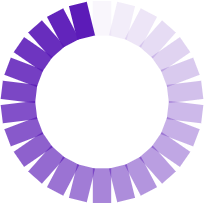Designing a logo is a multifaceted process that requires creativity, strategy, and attention to detail. From conceptualization to finalization, each stage of the logo design process plays a crucial role in creating a memorable and effective brand identity. Here’s a step-by-step overview of the logo design process:
1. Research and Discovery: Start by conducting research to understand the client’s industry, target audience, competitors, and brand positioning. Gather insights about the client’s preferences, values, and unique selling points to inform the design process.
2. Define the Design Brief: Collaborate with the client to define the design brief, outlining project objectives, deliverables, timeline, and budget. Clarify expectations regarding the style, tone, and message the logo should convey, ensuring alignment with the client’s brand identity and goals.
3. Conceptualization: Brainstorm ideas and concepts based on the research and design brief. Explore various design directions, sketching out rough concepts and iterations to explore different visual representations of the brand. Experiment with typography, symbols, and imagery to find the right balance and expression for the logo.
4. Design Development: Refine selected concepts and develop them further into digital renderings using graphic design software. Pay attention to composition, balance, and scalability, ensuring that the logo works effectively across various applications and sizes. Experiment with color palettes, typography, and visual elements to create a cohesive and visually appealing design.
5. Presentation and Feedback: Present the initial logo concepts to the client for feedback and review. Explain the rationale behind each concept and how it aligns with the client’s brand identity and objectives. Encourage open communication and collaboration, soliciting feedback from the client to refine and iterate on the designs as needed.
6. Revision and Refinement: Based on the client’s feedback, revise and refine the logo concepts, making adjustments to typography, color, layout, and overall composition. Iterate on the designs, incorporating client input while maintaining a balance between creativity and practicality. Aim to achieve a final design that resonates with the client and effectively communicates the brand’s identity and values.
7. Finalization and Delivery: Once the client approves the final logo design, prepare the necessary files for delivery in various formats and resolutions. Provide the client with the logo files in vector formats (e.g., AI, EPS, SVG) for scalability and versatility, as well as raster formats (e.g., PNG, JPEG) for web and print use. Include guidelines for logo usage, such as minimum size, clear space, and color variations, to ensure consistent and effective application across different platforms and media.
8. Implementation and Brand Rollout: Assist the client in implementing the new logo across various touchpoints, including websites, marketing materials, signage, and merchandise. Ensure that the logo is applied correctly and consistently, maintaining its integrity and visual impact. Monitor feedback and performance metrics to gauge the logo’s effectiveness in building brand awareness and recognition.
By following a systematic and collaborative approach to the logo design process, designers can create impactful and memorable brand identities that resonate with clients and audiences alike. Each stage of the process—from research and conceptualization to finalization and implementation—plays a crucial role in bringing the client’s vision to life and establishing a strong foundation for their brand.




















































